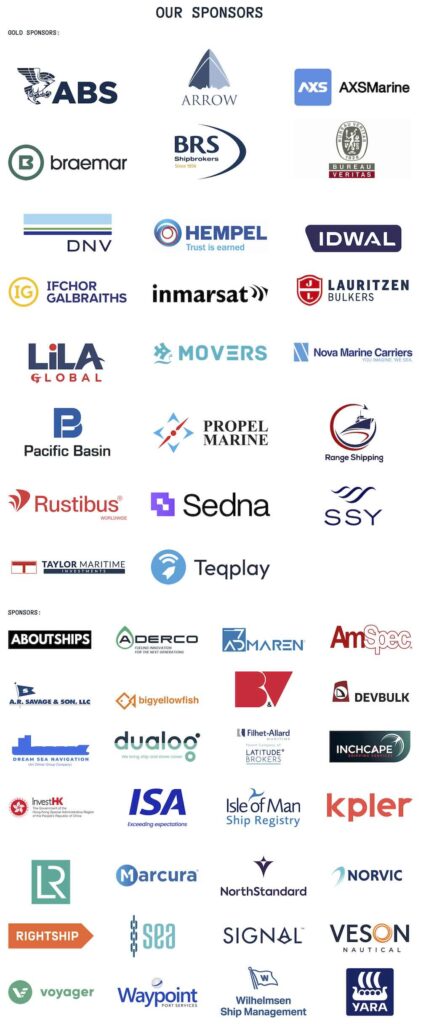Geneva Dry Dialogues: Shipfix

What do corn, coffee, the Venezuelan bolívar, and shipping markets share? According to Alex Stuart-Grumbar, head of maritime data products at Shipfix, part of the Veson Nautical empire, the answer is that they all bear resemblance to the theoretical perfect competition model.
“In shipping markets,” he explains, “numerous buyers and sellers engage in transactions where the product is homogenous. Actors act as price takers, with rates in various basins influenced by the continuously shifting regional imbalances between cargo volumes and available ship capacity.”
Yet, according to Stuart-Grumbar, two factors of the perfectly competitive model fail to reconcile with the fundamental economic assumption ‘Ceteris Paribus’ (all other things being equal): first, every cargo is different and no vessels are identical, which leads to a need for detailed information, and secondly, there are the barriers in the flow of information between market participants.
“Information remains opaque and asymmetrical among shipping participants regarding the timing and locations of cargo loading,ship availability,” Stuart-Grumbar explains.
In the era of digitalisation and big data, Stuart-Grumbar argues that industry participants increasingly recognise the significance of harnessing new alternative datasets to gain a better understanding of forward market dynamics. Shipfix, a Veson Nautical Solution, has introduced a market dataset, derived from anonymised and aggregated commercial circulars exchanged within the Shipfix community. This community-driven model seeks to democratise access to forward demand and supply curves while safeguarding sensitive commercial market data.
Chartering managers can now visualise this market data in context through the new Shipfix Freight Analytics module, providing instant access to demand, supply, and price curves derived from forward cargo and tonnage counts within loading and ballast basins. The more than 500 delegates attending Geneva Dry next month will be able to see the system live as Veson Nautical is exhibiting at the show. The cargo order data serves as a forward-looking indicator for the demand for seaborne transportation in specific loading areas. Shipfix has mapped ballast areas relevant to each load area, indicating the number of ships available for employment over a forward period.

Why is relying solely on AIS data no longer sufficient to find a market edge? Stuart-Grumbar reckons he has the answer to this. On the supply side, according to the Shipfix executive, utilising AIS data to estimate the number of ballasters sailing to the loading area fails to provide an accurate depiction of the supply situation, as it cannot discern which vessels have already been fixed.
Furthermore, he points out that delays in the ship crews updating the AIS vessel destination often lead to inaccurate data, rendering it unable to present a clear picture. In contrast, Shipfix tonnage data identifies when and where the vast majority of ships on the water will next be available for employment.
On the demand side, Stuart-Grumbar says AIS-based trade flows also present their limitations. These flows are constructed based on companies labelling berths and terminals based on their knowledge of terminal owners or cargoes historically loaded or discharged from them. When a ship enters a geographic polygon, the algorithm makes broad assumptions about the type and volume of cargo loaded or discharged based on probability, often resulting in significant inaccuracies, especially in minor bulk or breakbulk categories where various commodities are typically handled at the same berth or terminal. However, what’s even more crucial is that trade flow data merely reflects past freight market movements, as the data becomes available only once the ship is already loaded. In contrast, Shipfix’s cargo order data anticipates what will be loaded in the upcoming period, offering chartering teams valuable insights into future demand trends.
“As the market embraces this new era of collaborative analytics, the shipping industry is primed to unlock new efficiencies and opportunities,” Stuart-Grumbar maintains.
Geneva Dry delegates will be able to see first hand all the solutions in the Veson Nautical stable in the exhibition space just outside the conference hall at the Hotel President Wilson. Other well known Veson brands include VesselsValue, Q88, and Oceanbolt.
Geneva Dry will kick off on May 2 with an hour on digital efficiency drivers with top names from Oldendorff Carriers and Cetus Maritime among the speakers followed by a workshop on making data actionable and finishing with what promises to be a lively debate on the future of fixing, moderated by Mandarin Shipping’s Tim Huxley with well known names from the likes of Bahri, Lauritzen Bulkers and Arrow as panellists.
Designed to be the annual global summit for the dry bulk shipping community, the event now boasts an extraordinary mix of shipowners, trading companies, miners and tech providers, with more than 245 companies due to convene at the Hotel President Wilson on the shores of Lake Geneva.
The high-level summit is split into relevant sectors to make delegates’ time more targeted and rewarding. Sessions also include minor bulks; agri-commodities; coal; iron ore; and decarbonisation.
Among companies attending are Anglo American, Asyad Shipping, Bahri, the Baltic Exchange, BPG Shipping, Cargill, Cetus Maritime, Cobelfret, CTM, Devbulk, Fednav, G2 Ocean, Grindrod Shipping, Hadley Shipping, Heidelberg Materials Trading, Intercargo, Itochu, KC Maritime, Klaveness, Lauritzen Bulkers, Norden, Nova Marine Carriers, Olam, Oldendorff Carriers, Pacific Basin Shipping, Pangaea Logistics Solutions, Precious Shipping, Sumitomo Mitsui Finance and Leasing, Swire Bulk, Taylor Maritime, Trafigura, and Wah Kwong Maritime.
The full Geneva Dry agenda can be accessed here.
Geneva Dry registration, at just $780, can be accessed here.

